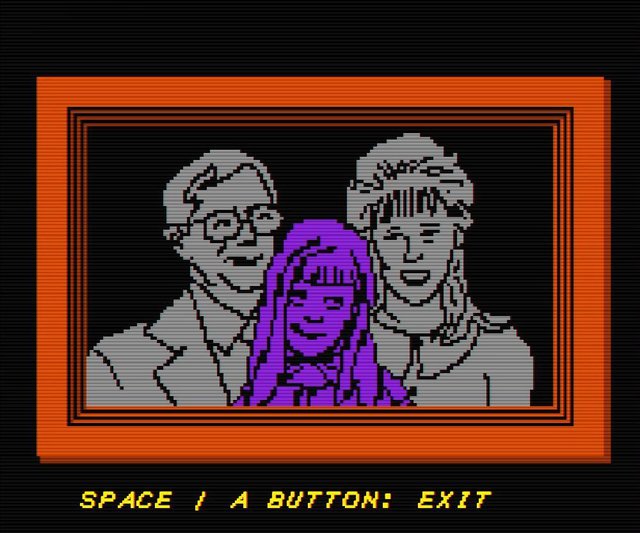- Tetriphys: The Thing That Should Not Be Mac Os Download
- Tetriphys: The Thing That Should Not Be Mac Os Sierra
- Tetriphys: The Thing That Should Not Be Mac Os X
If you'd rather not let your Mac automatically update, you should periodically check to see if there is an update to your version. In High Sierra and earlier you can go to the Mac App Store. The Mac OS has been around for so long that there's a lot to discover if you know where to look. Now that you know about these hidden gems, you simply have to go try them. Follow the instructions above, then report back here to let us know which game you liked best.
Moving files in Mac OS X is not as simple as it was in Mac OS 9 days (prior to 2004, not to be confused with the 2013 released Mac OS X 10.9), and is different from Windows as well.
Before deleting or moving any files you are uncertain of, be sure to make at least two backups of your critical data.
Files with a period as a prefix (i.e. .profile, and .DS_Store), should not be renamed or moved. These are files that are otherwise invisible in Mac OS X and help Mac OS X manage the system itself.
Don't delete or move mach files that appear when you double click the hard disk icon.
User folders must have their name maintained if you expect to be able to use X again. So if you first setup your Mac OS X account on setup as JSmith, don't rename or move the JSmith folder from the Users folder. We'll assume your user folder here on in your Users folder is your JSmith folder for example purposes only.
Unix defines directories and subdirectories by /es. So when I say /Users/JSmith/Documents/, that means you double click hard drive, double click Users, Double click JSmith, and double click Documents folder to get there from Mac OS 9. In Mac OS X View by columns allows you to navigate folders by single clicking on them, but they maintain the same hierarchy.
Don't delete or move files within System and Library folders appearing when you first double click your hard disk. Don't delete or move .App files in your Applications folder, these are Mac OS X native applications.
Don't delete or move files in your /Users/JSmith/Documents or /Users/JSmith/Library folder. Be aware that by default Mac OS X may set itself to put your iTunes music in /Users/JSmith/Music though that can be changed in the preferences, and iPhoto in /Users/JSmith/Pictures/
You can freely move the contents of these files and folders about, though not necessarily their subfolders (unless you created the folder):
/Applications Mac OS 9 - though I would test to make sure the application works after moving it. Tennis4two - the roots mac os. If it doesn't then move it back.
/Documents
/Users/JSmith/Library/Favorites/
/Users/JSmith/Movies

/Users/JSmith/Sites
/Users/JSmith/ (except its default subfolders)
Tetriphys: The Thing That Should Not Be Mac Os Download
Observing all these rules will prevent headaches in the future.
Additionally, you can safely delete Log files, but not the folders that own them. There is a nightly script that runs to delete them in Mac OS X as
long as you are in screen saver, but not always in Energy Saver, or they are deleted right after the machine wakes from sleep. The latter function could
explain the lag to wake from sleep. Those log files can be deleted if you are running low on space. But they could make it hard to troubleshoot issues that happened when they were last modified.
System Cache files should not be deleted unless your system is backed up, as they could impact the ability of programs to launch.
If you find you must access any of the Mac OS X only folders while in 9 or running an application in Classic, return to X, and quit Classic and repair permissions (links to Apple knowledgebase explaining how to repair permissions)
Tetriphys: The Thing That Should Not Be Mac Os Sierra
Note for Windows users: Mac OS X has two file locations that are nothing more than shortcuts. The translucent bar, known as the Dock, and the left Finder Window sidebar. That means do not assume when you drag to either location that a file is safely residing in some other folder, than the source folder you just dragged from. Unlike Windows, it is not! Also installer packages create virtual disks that dismount when you reboot. Those virtual disks contain folders that you sometimes have to drag to the hard drive Applications folder for them to be usable always. Otherwise you have to remount the image to get access to the application. Dragging the application from the image to the shortcut bar, or the Dock will NOT install it. Well packaged applications include their own installer proram to avoid this problem. If you drag to the Dock, expect it only to represent a shortcut to wherever you dragged it from. It is not safe deleting it from the source location if you want access to it again!
The OS is located on the 'Macintosh HD' volume. User data is located on the 'Macintosh HD - Data' volume.
Tetriphys: The Thing That Should Not Be Mac Os X
If you erased the drive volume, then why not erase the whole physical drive instead? If the physical drive is not seen in Disk Utility, then click on 'View' and select 'Show all devices' option so that the physical drive appears in the left pane of Disk Utility. I don't know if this is an option when booted from the local Recovery Mode (Command + R), but it should be an option when booted to Internet Recovery Mode (Command + Option + R) or from a bootable macOS USB installer. For Catalina the drive must be erased as GUID partition and APFS (top option).
Nov 23, 2019 4:26 PM
